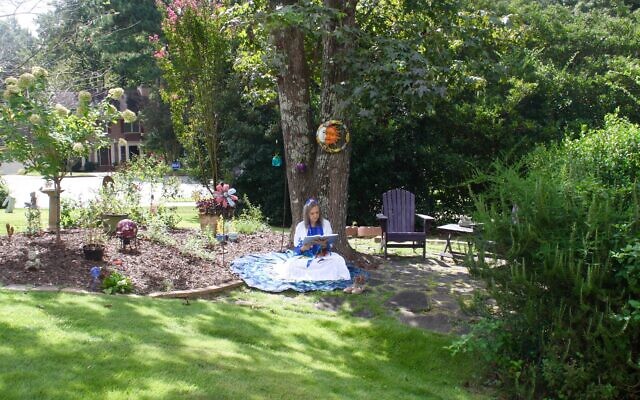Alternative Ways to Observe
During Yom Kippur, we’re charged with the task of creating ways to connect to G-d and the traditional observance, in non-traditional ways.
Dr. Terry Segal is a licensed Marriage & Family Therapist with a Ph.D. in Energy Medicine. She is the author of "The Enchanted Journey: Finding the Key That Unlocks You.”
Instead of focusing on what we won’t be doing this Yom Kippur, let’s generate excitement about co-creating our unique observance this year.
Here’s the traditional order: Maariv (evening service), Shacharit (morning prayers), Torah service, Musaf (poems and stories), Minchah (afternoon service), Yizkor (remembrance of the departed) and Neilah (closing).
In advance: Inquire if your synagogue is loaning prayer books for home use. Gather family, in person or online, and invite reflection on what brings meaning to Yom Kippur to be shared on the Day of Atonement. Is it the family meal, confessional, Yizkor, closing of the gates, or the shofar blast? Of course being together tops the list but, for many, that’s not an option this year. Acknowledge the losses that feel raw and personal.
Each member can bring something to the experience.
Select poetry or art that stirs your soul. Research rituals from other countries. Those with musical ability can find sheet music for a simple version of Kol Nidre, meaning “all vows.” It’s the heart-wrenching melody that called all Jews back to prayer, including those who had converted under duress. Try shofar blowing. Share the recipes so on erev Yom Kippur you can eat the same meal. Gather family heirlooms, such as an embroidered tablecloth or Kiddush cup, along with generational family photos to tell the stories. Recall actions for which you’re sorry and make amends.
On erev Yom Kippur: Dress nicely, as if going to synagogue. Our Torah and clergy dress in white for spiritual purity, without accessories of vanity. White is the color of the shroud, in death, reminding us of our own mortality and urgency to repent. Avoid wearing leather, representing dominion over the animals and because it was a luxury of the wealthy. We’re all equal at this time.
If using technology, eat “together,” virtually, before beginning the fast. After the meal, put on your tallit, the only time we wear it at night. Maariv, the evening prayers, include the “Shema” and “Amidah,” and are recited standing, facing Jerusalem. Listen to the live or recorded version of Kol Nidre. Fasting may be more difficult this year because you’re at home. Prepare sandwiches and snacks for the younger ones before bed to avoid food preparation when you’re hungry the next day and the refrigerator is in close range. Little ones can eat nutritious foods but “fast” from treats.
On Yom Kippur: Shacharit, and the liturgy of the day, focuses on

forgiveness and teshuvah, repentance and turning from misguided ways. We seek forgiveness from G-d for our personal shortcomings, but for transgressions against others, we must ask forgiveness directly.
The “Viddui” is our list of transgressions. Print copies and let each person pick one to discuss. Example: What does it mean to be stiff-necked or have xenophobia? Avoid political opinions and focus on the meaning.
During Musaf, share your offerings of discovery, art, poetry and stories, and what makes the day more meaningful. Meditate on or discuss themes of scapegoating or mindful prayer that leads to acts of righteousness, charity and morality. Read the story of Jonah and the whale, and for younger ones, other stories related to Yom Kippur.
After, or in place of Minchah, you might go to the woods or a park to find a quiet spot and immerse yourself in the sensory experience of G-d’s beauty. Commune with G-d. Remember your departed loved ones for Yizkor, and include thoughts of what you wish you could hear from or say to them. Stay aware of your body regarding lightheadedness or dehydration.
Some synagogues that are livestreaming, will leave the ark open for contemplative time.
You can plan a silent hike that culminates during Neilah, when the gates of heaven close and G-d’s judgment is sealed. Following the final tekiah gedolah blast of the shofar, the stars appear, and you can break the fast with picnic foods you’ve packed into a cooler to complete your observance.
G’mar Hatima Tova. May you be sealed in the Book of Life.
Dr. Terry Segal is a licensed marriage and family therapist with a doctorate in Energy Medicine, and is author of “The Enchanted Journey: Finding the Key that Unlocks You.”




comments